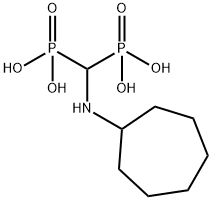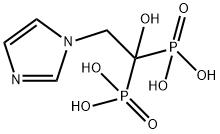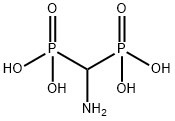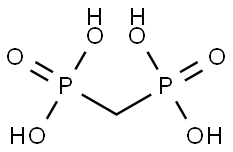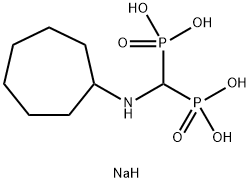((Cycloheptylamino)methylene)diphosphonicacid , 95+% , 124351-85-5
| Pack Size | Price | Stock | Quantity |
| 1g | RMB3998.40 | In Stock |
|
| others | Enquire |
PRODUCT Properties
| Melting point: | 232-233° |
| Boiling point: | 564.2±60.0 °C(Predicted) |
| Density | 1.48±0.1 g/cm3(Predicted) |
| storage temp. | 2-8°C |
| solubility | Water (Slightly), Methanol (Slightly) |
| pka | 0.61±0.10(Predicted) |
| form | Solid |
| color | White to Off-White |
Description and Uses
Bisphonal, a new third generation drug, was launched in Japan for the treatment of osteoporosis. It can be prepared in two steps by heating cycloheptylamine, triethylorthoformate and diethyl phosphite followed by ester hydrolysis. The mechanism of action is not well understood. Bisphonal has no effect on bone mineralization but tightly binds to calcified bone matrix and inhibits bone resorption. It causes a decrease in the number and activity of osteoclasts (morphology and decrease in H+ secretion). They seem to undergo cell death with an impairment in the process of osteoclast formation. Bisphonal does not induce osteomalacia and its activity is partly mediated through osteoblasts (releases an inhibitor of osteoclast recruitment). It is a potent inhibitor of squalene synthase (50-fold) maybe by Mg2+ chelation or as a pyrophosphate mimic, undergoes practically no metabolism, and stimulates renal production of 1,25-dihydroxyvitamin D.
Incandronate is a bisphosphonate derivative. Bisphosphonates are most widely used as agents for treating osteoporosis and have also been used for other purposes such as herbicides, anticancer agents, and antiparasitics.

